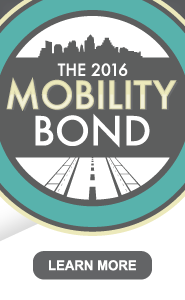View a map of the Proposed Urban Rail Line
How the Urban Rail line was developed
- In 2011, a regional transportation planning agency called the Capital Area Metropolitan Planning Organization formed a Transit Working Group composed of regional elected and civic leaders to create a cohesive transit plan for our region. After 18 months of study and public involvement, the Transit Working Group endorsed the “Project Connect High-Capacity Transit System Plan,” linking 25 activity centers, 13 cities and four counties with a mix of Express Bus on Express Lanes, Bus Rapid Transit, Urban Rail, Commuter Rail and Regional Rail.
- A subsequent Central Corridor Advisory Group, chaired by Mayor Lee Leffingwell and made up of citizens; representatives from regional business, community and professional groups; and officials from local government agencies met June 2013 through June 2014 to further evaluate routes, alignments, modes, and funding and organizational requirements.
- On June 13, 2014, the Central Corridor Advisory Group endorsed a recommended route, also known as the Locally Preferred Alternative (LPA), for Urban Rail.
- On June 23, 2014, the Capital Metro Board of Directors endorsed the recommended Urban Rail route and recommended a quick expansion to the airport.
- On June 26, 2014, Austin City Council endorsed the recommended Urban Rail route as part of the 2014 Austin Strategic Mobility Plan. The plan also included the roadway projects of regional significance.
The Urban Rail line is expected to include*:
- 9.5 miles of double-tracked, electrified route in a mostly dedicated guideway
- 10- to 15-minute frequency and stops one-half to one mile apart with an average speed of 20-30 miles per hour
- Estimated 2030 daily ridership is 18,000 passengers per day, with an estimated 10,000 new transit riders attracted to the system
- Transfer opportunities to the existing Capital Metro MetroRail system, which connects downtown to East and Northwest Austin as well as Leander.
The Urban Rail line is expected to generally operate on*:
- East Riverside corridor from Grove Street to the south shore of Lady Bird Lake
- Cross Lady Bird Lake at Trinity Street
- Trinity Street serving the Austin Convention Center, downtown Austin, the State Capitol Complex and the new Dell Medical School
- San Jacinto corridor serving the University of Texas including Darrell K. Royal Memorial Stadium, University of Texas Alumni Center, the Bass Concert Hall, and the University of Texas Engineering and Law schools
- Red River Street corridor servicing St. David’s Hospital and Hancock Center
- Airport Boulevard to Austin Community College Highland Campus
*Final alignment, station locations and additional project definition would be defined during the environmental study and preliminary engineering efforts.

